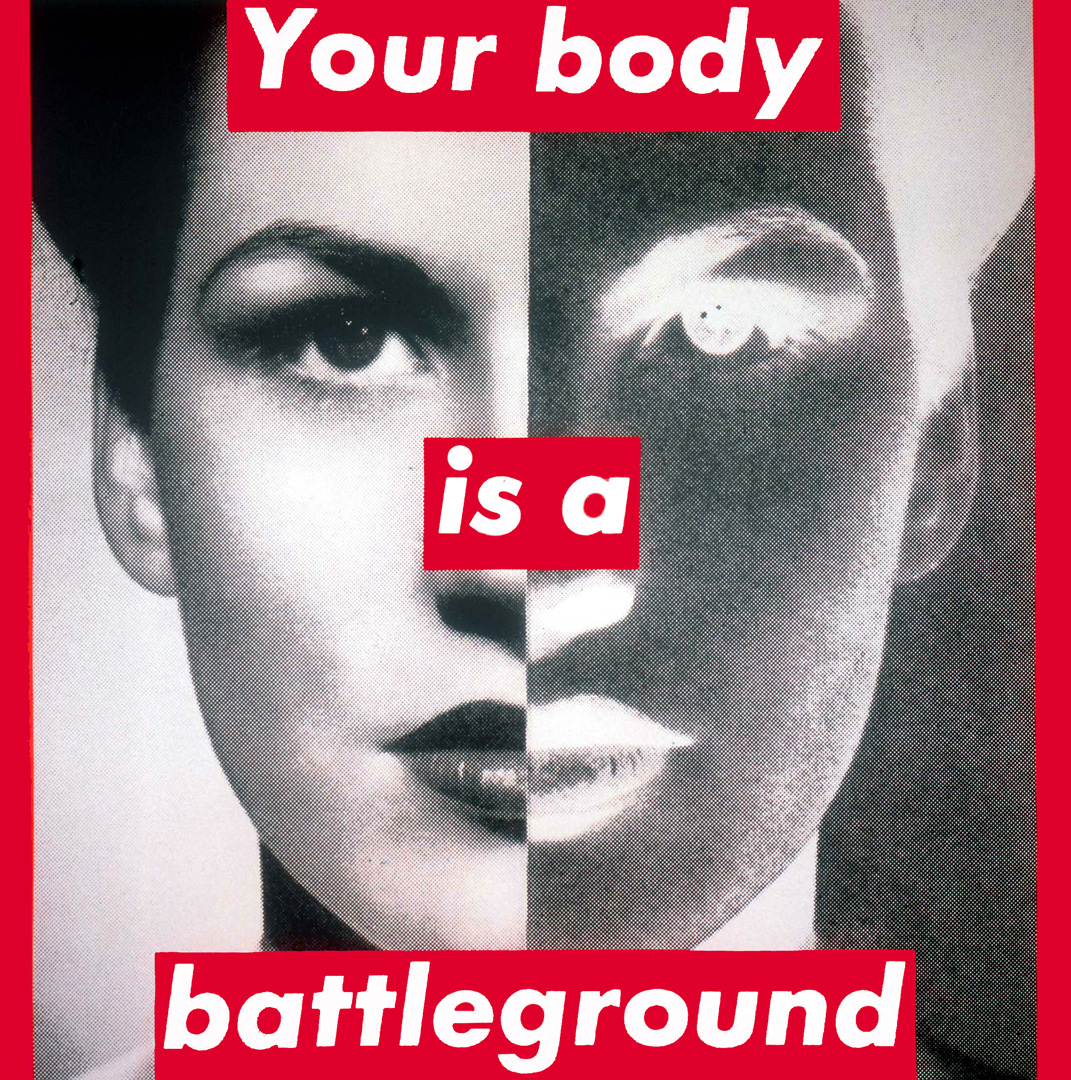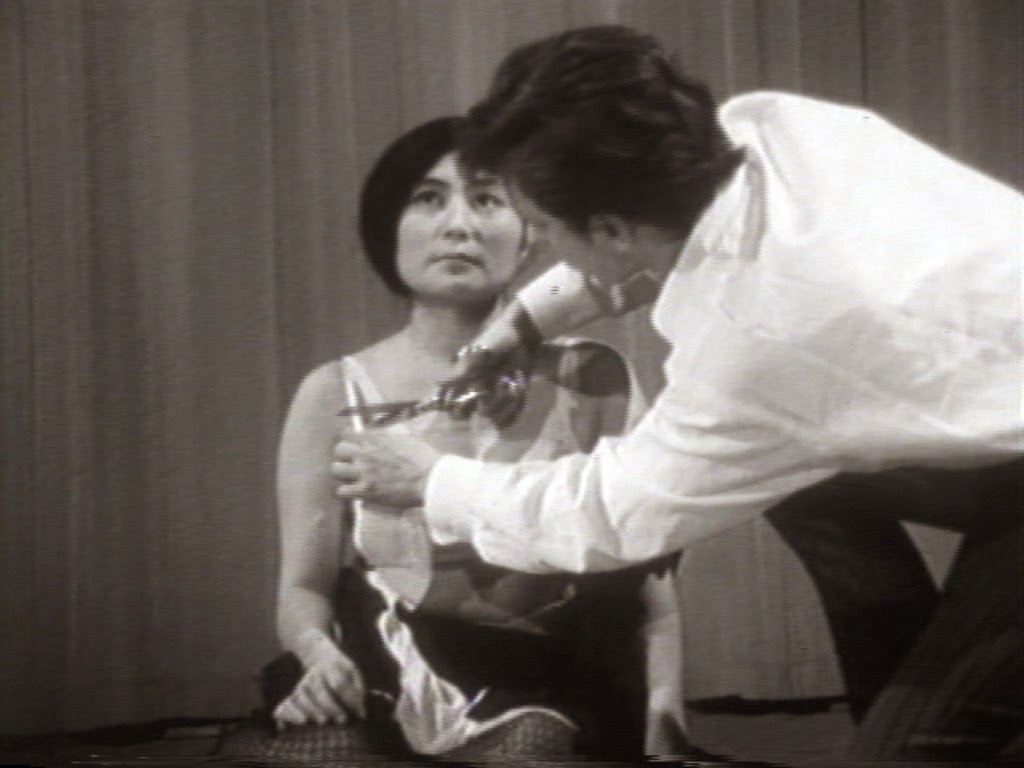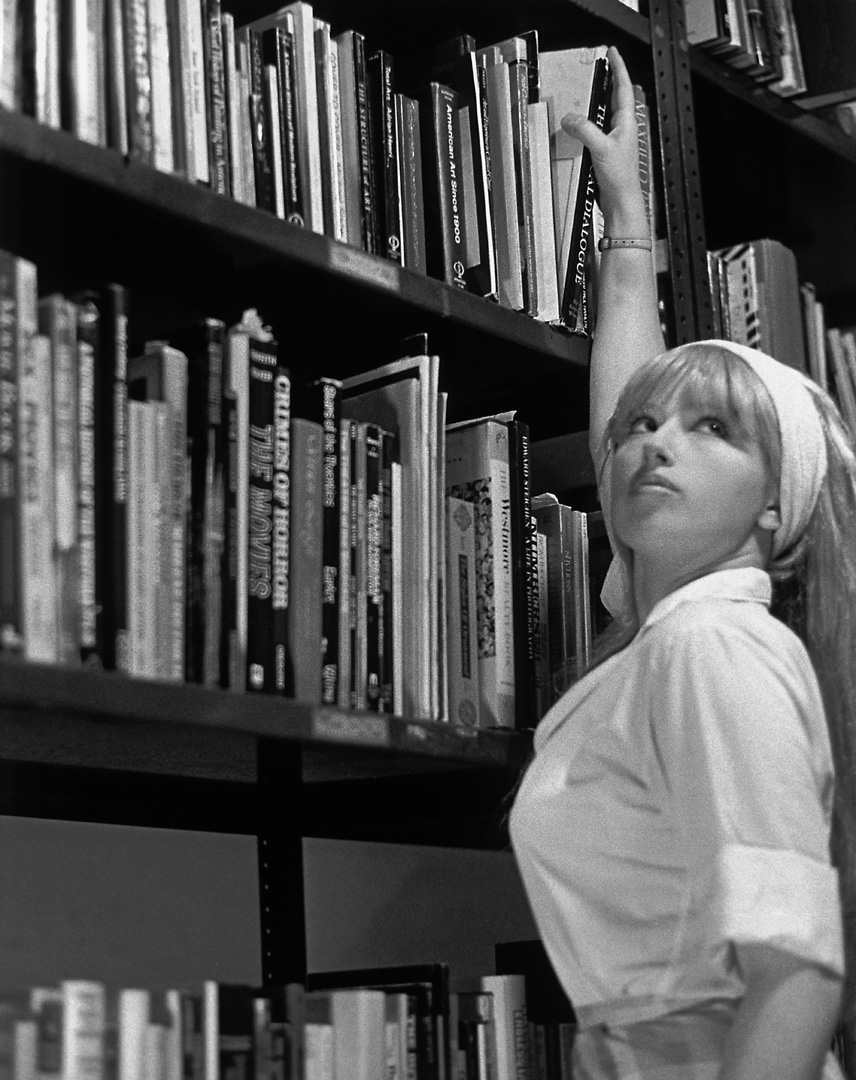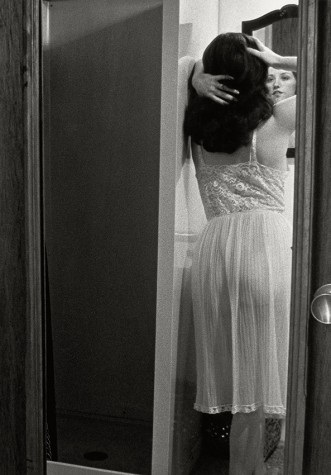Women have displayed immense strength and persistent courage throughout time. Women have dared to express their beliefs and challenge the norms throughout time. As the battle continues, we must honor the women who have been and still are brave enough to take a stance, continuing to strive for a better future. Artists today continue to carry on the efforts in order to present a challenge to patriarchal ideologies and demand for feminism through various techniques and strategies. Such contemporary artists include Cindy Sherman, Barbara Kruger, Judy Chicago, Yoko Ono, and Nalini Malani, each presenting a unique technique to convey an essential argument for feminist ideologies.
First off, Cindy Sherman, an iconic painter and photographer, challenged the notion of the underlying female sexuality. During her photography days, she played with makeup and costumes, photographing herself in "different forms" in order to display the hidden female sexuality that lies beneath the surface of any female depicted– even dressed in costumes. As Whitney Chadwick writes, "Cindy Sherman's photographs reveal the instability of gender, and challenge the idea that there might be an innate, unmediated female sexuality" (Chadwick 383). Cindy Sherman wished to unpack and expose such an inborn, yet learned notion. To add on, as Chadwick states, "In 1978, she began placing her own body in the conventions of advertising and film images of women... [enabling] her to act out the psychoanalytic notion of femininity as a masquerade– that is, as a representation of the masculine desire to fix the woman in a stable and stabilizing identity" (Chadwick 383). Not only does Cindy Sherman point out the innate sexuality beneath portrayed women, but she also takes into account and essentially finds fault in masculinity and the "masculine desire" to have women portrayed in a specific form or as a specific object. Again, calling into question the objectivity of women as well as the pretense or advertising properties of women's' portraits. Such assertions can be viewed in photographs such as those depicted below.
Furthermore, Barbara Kruger decided to use words as her weapon. Barbara Kruger would "blow up severely cropped photographs of women, and their short accompanying texts subvert the meanings of both image and text in order to destabilize the positioning of woman as object" (Chadwick 382). Barbara Kruger uses bold pictures along with bold words convey an argument which notably is directed towards a specific audience. She makes it clear who her art work is addressing. Her use of pronouns such as "you, me, we, or I" address a specific audience and her artwork to almost speak to individuals. Clearly, Kruger uses her artwork to critique society. She points out and criticizes various political, social, economical, and gender specific issues, as well as other dilemmas. Notably, her color choice is also quite interesting. The red highlighted letters stand out quite distinctly against the black and white background picture.
 |
| Barbara Kruger, It's All About Me, I Mean You, I Mean Me, 2010 |
 |
| Barbara Kruger, Your Body Is A Battleground, 1989 |
One of my favorites, Judy Chicago, uses her unique abstract paintings as well as conflicting colors to generate artwork that conveys many issues. Judy Chicago painted using "open, central shapes, and layered, often petal-like images... which Chicago identified as 'a central core, my vagina, that which made me a woman'" (Chadwick 358). Judy Chicago's play on intricate, suggestive patterns caused much steam in the male population. The colors she used were also quite suggestive; she played around the pinks, peaches, browns and neutrals, purposely causing her paintings to be more suggestive and obvious. Judy Chicago's work played on and challenged the objectifications of women and boldly captured the essence of womanhood. By doing so, she adds a personal factor to the paintings. She depicts something that is essential to her personality– being a woman. Moreover, she adds a self-conscious, subjective viewpoint to her work, giving herself power to define herself, instead of being objectified. In other words, her artwork portrays a subjective viewpoint.
To add on, Yoko Ono is yet another female artist who challenged societal norms in her own unique way. Yoko Ono specialized in performance art. She "began performance works which relied heavily on narrative and autobiography" (Chadwick 362). Yoko Ono performed pieces that forced the audience to be a part of it. She allowed the audience to depict their own meaning of the piece of work. In one of her most famous works, Cut Piece for example, she instructs the audience to interact closely with her; she instructs them to cut a piece of her clothing while she sits still, until she is left with under garments alone. She does not try to stop anyone from cutting, she simply sits there. The audience is to realize the underlying issues of objectivity, sexuality, gender, sexual violence, public spectacles, etc.
 |
| Yoko Ono, Cut Piece, 1964 |
Last but not least, Nalini Malani used performance arts, paintings, and installations to present her ideologies and beliefs. As Chadwick states, "Malani's interests in issues of female subjectivity underlies her search for a postcolonial Indian modernism in both her own and other oppressed cultures" (Chadwick 440). She expresses her personal experiences as a refugee of the Indian Partition, expanding upon ideas such as oppression and subjugation. Mainly, Malani explores the ideas of having two identities– being torn between two places. She expresses personal challenges, but more so she expresses challenges as a female going through tough times– the feminine thought and voice. Referring to one of Malani's famous installations, Whitney Chadwick states, "Her Body as Site, a room installation of large, mixed medium wall drawings of paint, chalk, and charcoal and six works on milk-carton paper, explored the effects of man-made events like the mutations seen after atomic bombs and nuclear tests in the Bikini Atoll in the 1950's" (Chadwick 440). She explores violence, oppression and masculinity.
 |
| Nalini Malani, Body as Site, 1996 |
| Nalini Malani, Murmer of Maternal Lamenation, 2009 |
Each female artist has their unique process and strategy to bring about certain issues and contemplations, critiquing societies most major problems. Each artist incorporates their emotions and personal creativities to invent artwork that speaks volumes. Their art acts as a voice– it is loud, it is bold. It is a voice that is heard in the conscience of each individual that views, pays close attention, and understands the artwork.
“Barbara Kruger Biography, Art, and Analysis of Works.” The Art Story, www.theartstory.org/artist-
kruger-barbara-artworks.htm.
Chadwick, Whitney. Women, Art, and Society. 4th ed. New York, N.Y.: Thames and Hudson, 1990. Print.
“Cindy Sherman Biography, Art, and Analysis of Works.” The Art Story, www.theartstory.org/artist-sherman-cindy.htm.
“Judy Chicago Biography, Art, and Analysis of Works.” The Art Story, www.theartstory.org/artist-chicago-judy.htm.
“Nalini Malani.” Nalini Malani - Biography, www.nalinimalani.com/bio.htm.
“Yoko Ono Biography, Art, and Analysis of Works.” The Art Story, www.theartstory.org/artist-ono-yoko.htm.
By: Tanvi Singh




No comments:
Post a Comment